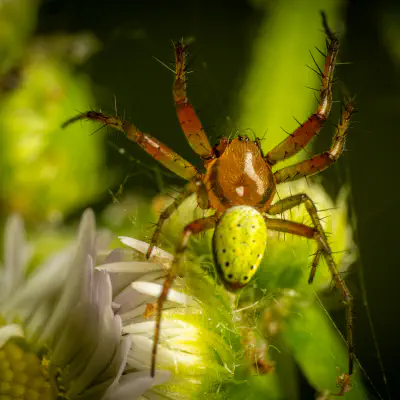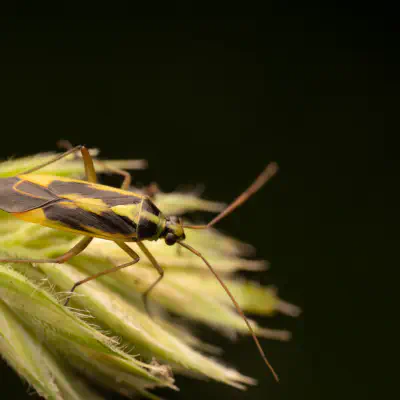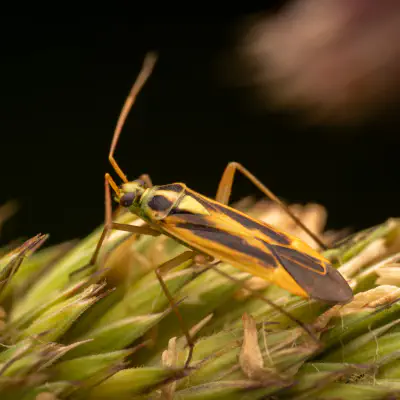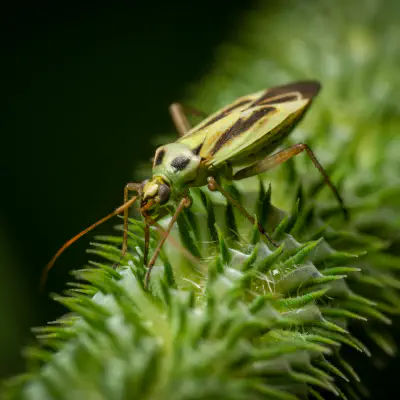Stenotus binotatus is a fairly large plant bug (6–7 millimetres or 0.24–0.28 inches long), which is somewhat variable in appearance. The insect's sides are roughly parallel, and the colours depend on both the animal's sex and its age, the markings becoming darker and stronger with increasing age. Males are mostly yellow, with darker markings on the pronotum and forewings, which females are greenish-yellow with paler markings.
Two-spotted Grass Bug (lat. Stenotus binotatus)
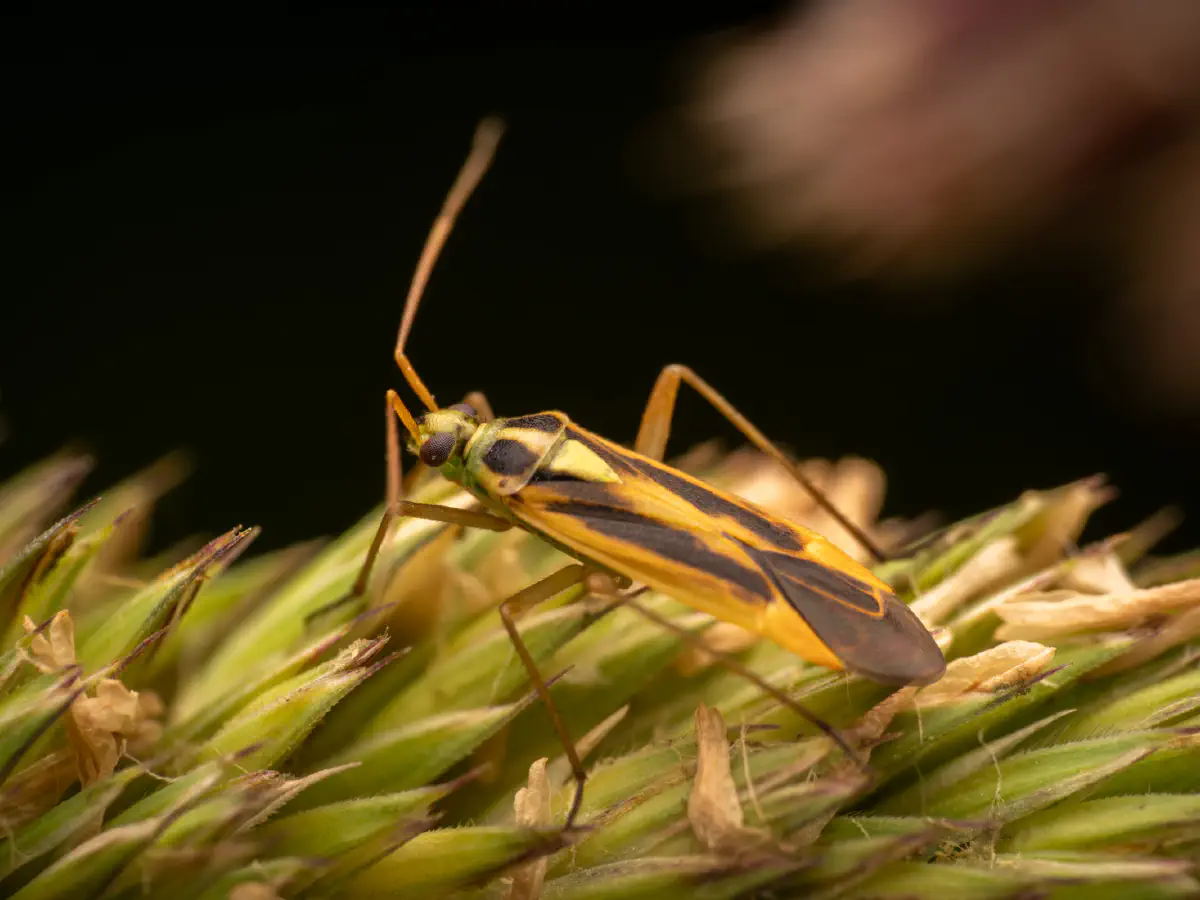
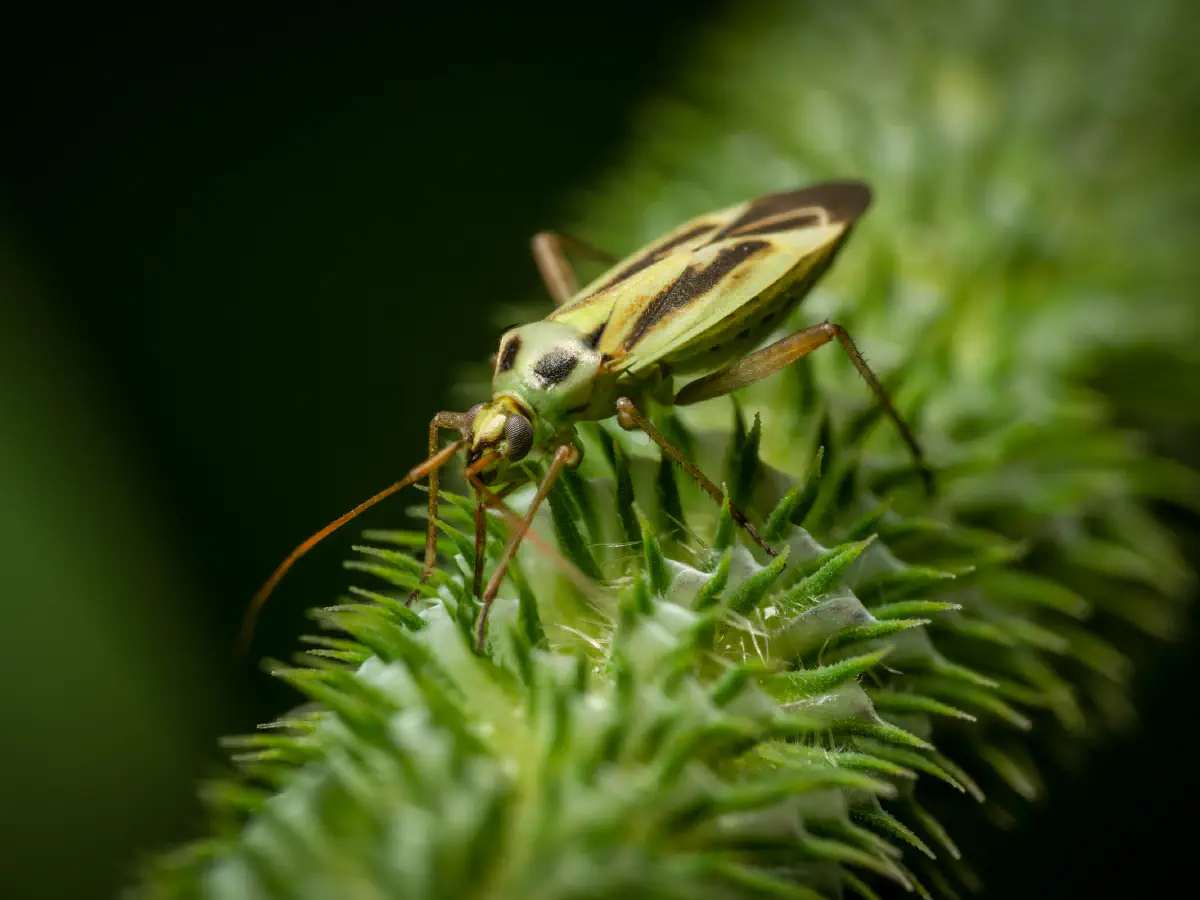
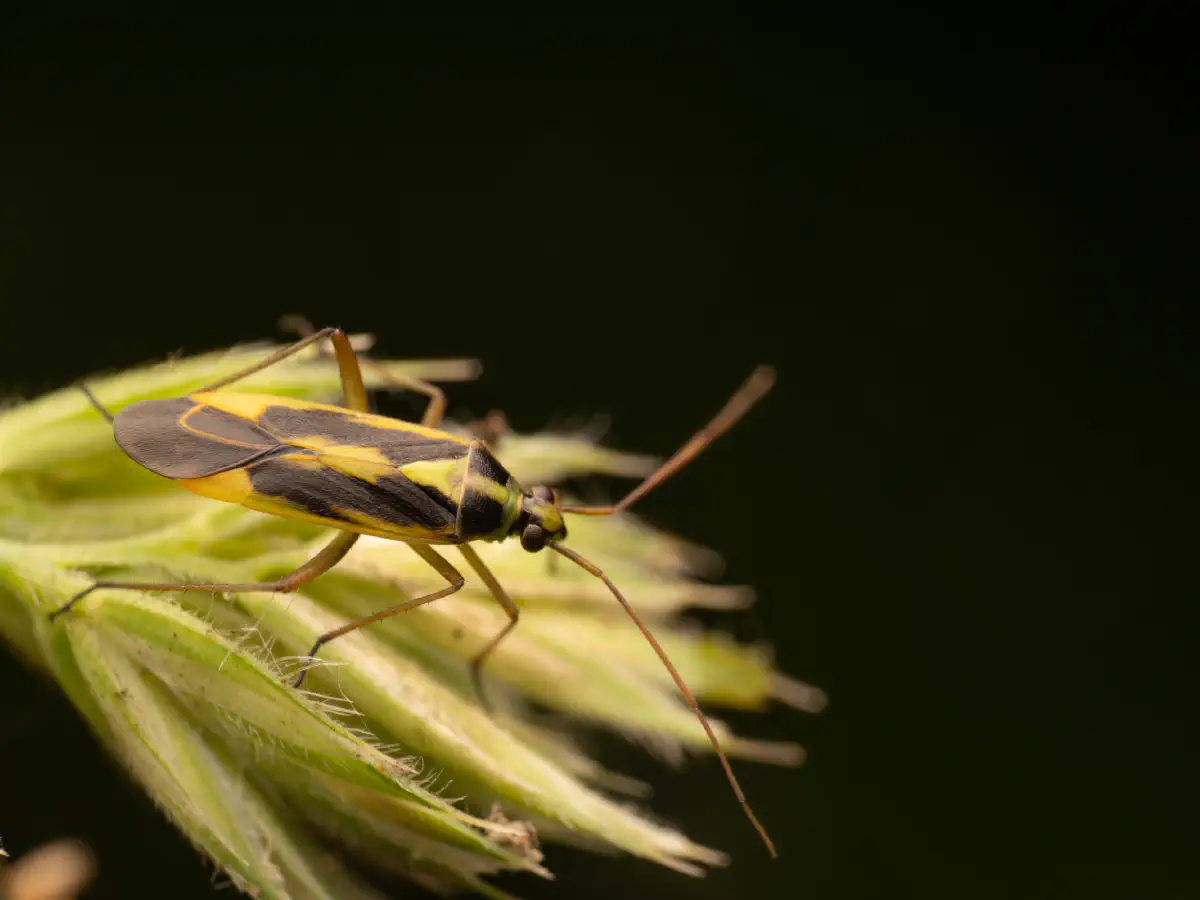




This is not intended to be a dry lexicon. Personal stories and sensitive articles form the framework for our pictures: „The spider’s vacation in an apartment“
Elio was looking for a quiet escape from the wild – but ended up caught in the middle of a whole new adventure.
